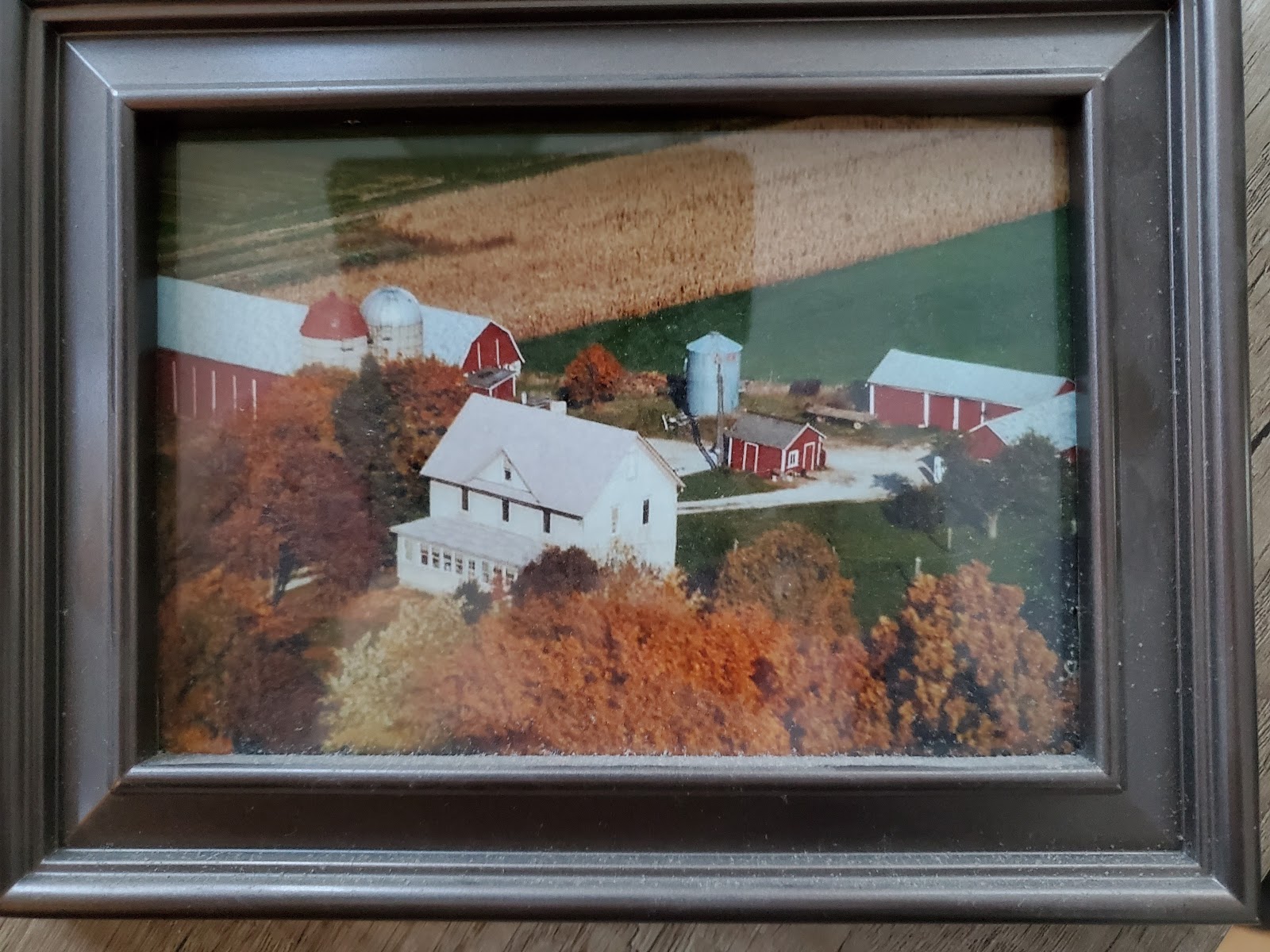
by Linda Halley | While Gwenyn Hill LLC as a business in its third year is an infant in the world of farming, the land that encompasses Gwenyn Hill comes with a history. For five generations the Williams family farmed here; clearing woods, picking rocks, grazing sheep, making hay and milking cows for their dairy operation. One can’t work the soil or walk the hills without a sense of that history.
Gwenyn Hill looks distinctly different than the Williamses’ farm in many ways. We pasture more beef and grow considerably more produce. We have planted a large orchard and seeded some hills to native species. However, much of what is happening here reflects the Williams’ efforts before us. We are restoring the most significant agricultural buildings as well as the two farmhouses. As a result, driving along Bryn Drive is visually reminiscent of an earlier time. We are also rebuilding the perimeter fences, long ago lost in the brush and bent down by snow. They confirm that pasturing animals happened everywhere on these 400 acres and was the keystone agricultural enterprise from the beginning. We, too, find that pasturing is the natural form of farming for these hilly, rocky fields.
Another reminder of the generations that came before is my relationship with the last generation of Williams to grow up here. I have enjoyed meeting the many cousins who are still scattered about southeastern Wisconsin. They love to tell me tales of their childhoods here, singing in Welsh at community gatherings, participating in daily chores and, of course, exhibiting at the county fair. I think you will enjoy, as much as I, the following essay written by Elly (Williams) Miller. It is a glimpse into her life growing up in the house where I now live.

Down on the Farm (A Typical Day in the Life of a 20th Century Wisconsin Dairy Farmer)
By Elly Miller, written in 2001, the year of her father, Ed Williams’, 90th birthday.
Ding, ding, ding… the alarm sounded and it was 6 am, time for the daily work routine. All six kids hurried to get on work clothes to begin our typical day on Bryn Drive in Waukesha County. (Three of us) reached for jackets and headed for the milk house. I switched on the silo auger, and silage came down the shoot to fill the feeding cart. I proceeded to push the cart down the aisle of fifty head of registered Holsteins.
Milking Registered Holsteins
Each cow, depending on its size and production, received a set amount of silage, corn, and hay. Each animal was given a name and had detailed records on its genetic make-up and milk production. Ralph completed the milking, and Dad cleaned all the milk equipment. Allen cleaned the stalls and swept the floors. When we finished the milking, we turned the cows out to pasture for the day. We walked to the house and knew we could expect to find the breakfast that my mother and three sisters had been preparing: potatoes, eggs, pancakes, juice, and milk.
During breakfast, we discussed our goals for the day. Within twenty minutes, we knew if we would be baling hay, planting crops, hoeing the garden, picking up stones, cutting thistles, picking blackberries, or working on our 4-H exhibits for the July County Fair.
Mom, Alice, Gladys, and Ruth usually cooked, baked, and prepared meals for our family of eight. We ate homegrown veggies, beef, and chicken. They spent hours canning, preserving, and freezing our foods for the winter months. When those tasks were done, they had to pitch in with fieldwork, hay, and outside activities.
Hay Baling
Dad always said, “When the sun shines, we bale.” This required one person to drive the tractor with the square baler, and a second tractor to drive the flat bed wagon. Two of us were on the wagon. We used a hook to pull the hay bales onto the wagon, and then stacked the wagon with as many as 60 bales. Once the wagon was full, it was driven to the barn to be unloaded onto an elevator, which dropped each bale into the hay mow. Two people stacked the mow neatly. If the drying conditions were right, a good day could mean 1500 bales in the barn.
At 4 pm, it was time to bring in the cows. Our collie, Laddie, assisted with this job. He would come running and knew how to round up the cows from the pasture and move them into the barnyard for water and into the barn for feeding. We fed all fifty cows, and then it was time for our dinner. After a day of hard work, we really looked forward to a home-cooked meal.
After dinner, we had to go back to the barn to milk the fifty cattle. We had four milking machines. After washing each udder, milking took less than two hours. By 7 pm we were feeding the calves and turning the cows out to pasture for the evening. We would have a game of baseball with our six cousins from next door for about an hour. After cleaning ourselves up, we were in bed by 8:30 pm to rest up for the next day.
That summarizes a day on the Williams’ Family Farm as it was known for 150 years.
Elly Miller grew up on the property that is now managed by Gwenyn Hill Farm and taught school in the Kettle Moraine district until her retirement.

